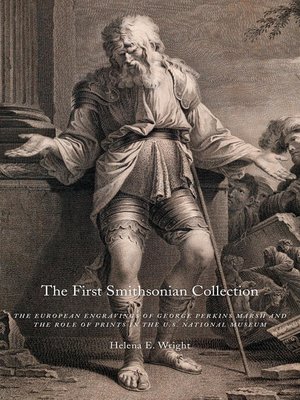The First Smithsonian Collection
ebook ∣ The European Engravings of George Perkins Marsh and the Role of Prints in the U.S. National Museum
By Helena E. Wright

Sign up to save your library
With an OverDrive account, you can save your favorite libraries for at-a-glance information about availability. Find out more about OverDrive accounts.
Find this title in Libby, the library reading app by OverDrive.



Search for a digital library with this title
Title found at these libraries:
| Library Name | Distance |
|---|---|
| Loading... |
Outstanding Academic Title, Choice, 2015
Winner, Ewell Newman Award of the American Historical Print Collectors Society, 2016
In 1849 the Smithsonian purchased the Marsh Collection of European engravings. Not only the first collection of any kind to be acquired by the new Institution, it was also the first public print collection in the nation, and it presented an important symbol of cultural authority.
The prints formed part of the library of Vermont Congressman George Perkins Marsh (1801-1882), a member of the Smithsonian’s Board of Regents. The uncertainty of the Smithsonian's mission in the early years complicated its motivation for purchasing the collection, especially given Marsh’s position as a Regent in financial difficulty. After a serious fire in 1865, portions of the collection were deposited at the Library of Congress and the Corcoran Gallery of Art. Efforts to reclaim it began in the 1880s, as a new generation of Smithsonian staff expanded the National Museum, but they achieved only mixed success.
Through the story of the Marsh Collection, the book explores the cultural values attributed to prints in the 19th century, including their prominent role in expositions and their influence on visual culture at a time when collecting styles were moving from an individual’s private contemplation of artworks to wider public venues of exposition in museums and reception by multiple audiences. The history of this first Smithsonian collection enlivens an important stage in the development of American cultural identity and in the formation of the Smithsonian as a national institution.
Winner, Ewell Newman Award of the American Historical Print Collectors Society, 2016
In 1849 the Smithsonian purchased the Marsh Collection of European engravings. Not only the first collection of any kind to be acquired by the new Institution, it was also the first public print collection in the nation, and it presented an important symbol of cultural authority.
The prints formed part of the library of Vermont Congressman George Perkins Marsh (1801-1882), a member of the Smithsonian’s Board of Regents. The uncertainty of the Smithsonian's mission in the early years complicated its motivation for purchasing the collection, especially given Marsh’s position as a Regent in financial difficulty. After a serious fire in 1865, portions of the collection were deposited at the Library of Congress and the Corcoran Gallery of Art. Efforts to reclaim it began in the 1880s, as a new generation of Smithsonian staff expanded the National Museum, but they achieved only mixed success.
Through the story of the Marsh Collection, the book explores the cultural values attributed to prints in the 19th century, including their prominent role in expositions and their influence on visual culture at a time when collecting styles were moving from an individual’s private contemplation of artworks to wider public venues of exposition in museums and reception by multiple audiences. The history of this first Smithsonian collection enlivens an important stage in the development of American cultural identity and in the formation of the Smithsonian as a national institution.







